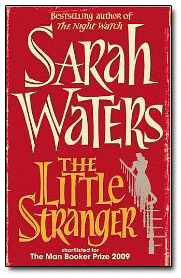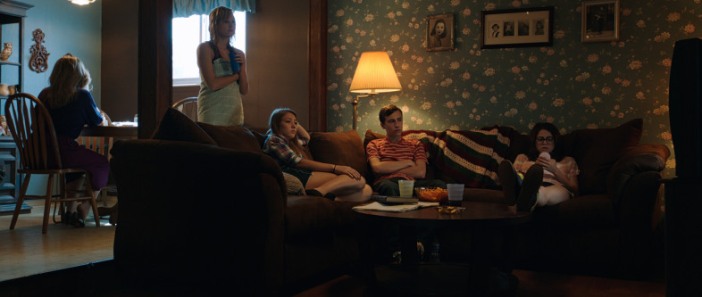On the morning of June 23rd 2016 my mother was admitted to a London hospital for surgery. In another time zone, I lay awake and worried, my stomach twisting into helpless knots. All over the UK, citizens made their way to the polling stations and held their collective breath. The world waited. I made bargains with a God I don’t believe in. For my family, the outcome was the best we could have hoped for. For my country, tragedy struck. My housemates and I, all British expats, sat glued to the internet in mute horror as the results came in, desperately refreshing pages in the hope of better news. But it was not to be.
On the phone, Mum sang the praises of the NHS staff who cared for her around the clock. “They’re so wonderful. But they work such long shifts.” On the TV, Nigel Farage was also discussing the NHS. £350 million a week? Oh, that promise was “a mistake.” ‘Leave’ voters began to wonder what they had got themselves into. The Prime Minister resigned. The global economy trembled. On my Facebook feed, my friends – university educated, under 35, city-dwellers – poured out their rage and shame. Together we mourned. Mum’s surgeons – one the child of Indian immigrants, the other a German national – are pleased with her progress. A team of nurses check on her stiches every hour. Britain meanwhile, cannot begin the healing process. There seems no way to bring the two sides together. We can only fling insults. How did we get here?
For decades, economic policy across the developed world has been geared to favour those with money. Trickle-down economics – the idea that allowing the rich to accumulate enormous wealth will stimulate the economy as a whole – has failed the majority of the UK population. Cameron and Osborne’s austerity budgets have deepened this inequality, hacking away at public services so the banks can be bailed out and the wealthy can continue to pay less tax. Working class families are left with no stability and no prospects. That makes people scared. It makes people angry. And rightly so. Frightened, angry people are vulnerable to chancers peddling easy solutions. If those in power – or in the case of UKIP, those who seek it – do not want the rage of the population to be directed at them, they need to channel it elsewhere. They need a scapegoat.
The EU was an easy target. An admittedly flawed bureaucratic institution which most people know little about. An area of politics most Britons have never bothered to engage with at all – who can honestly say they know anything about their MEP? And the open borders of the EU are inextricably linked with immigrants, foreigners, all those unspoken tribal fears about outsiders coming along and stealing what is ours. As the adorable puppets sang, ‘everyone’s a little bit racist sometimes’; no matter how hard we try, there are underlying prejudices woven into our culture. They come to the surface when we feel under threat. If you have the resources to flood the media with images of Syrian refugees supposedly marching towards Britain like an occupying army, it is easy to use those fears to your advantage.
As of last year, half the population of the UK was over 40. Referendum data showed that older people overwhelmingly voted to leave the EU, while the younger voters wanted to stay. Many of my peers feel that their futures have been betrayed by a selfish older generation. It is hard to put yourself in the place of an older person and to taste their nostalgia for days gone by. We’re all prone to viewing our own past through rose-coloured glasses – or sepia Instagram filters. But the old farts aren’t out to get us; they have the same trouble seeing through our eyes. They were educated in the last days of the Empire; we were raised on multiculturalism. Do you talk to your parents and grandparents about politics? I know I skirt around the issues, often not wanting to share my thoughts because I know we will disagree and I don’t want to start an argument. Then I am angry at them for not considering my hopes for the future. My Mum seemed quite surprised after the 2015 UK election when I ‘came out as a socialist.’ I had failed to share my world view with the woman who gave birth to me. Many older people feel out of place in the modern world; left behind by a changing society. If we want them to work with us towards the future, we must do more to include them. For this year’s London Mayoral elections, I went with my grandmother to vote. We discussed the candidates; she thinks Sadiq Khan is “quite a nice looking boy.”
Another awkward truth is that an aging population is one of the greatest problems facing the UK and most post-industrial nations. Working-age people cannot support a growing retired population, who as they age place an increasing strain on health and social care services. Ironically, this inbalance can only be eased by taking in working-age people from other countries. Older people are not to blame for the country’s problems; population trends are nobody’s fault. But the reality is that our systems of taxation and welfare need to adapt to provide for these changes. Older voters resist this, feeling that they have already paid their dues to society. It is easier to point the finger at immigration, EU regulation, cultural disintegration…anything rather than accept being part of the problem. We reach an impasse.
Young, liberal ‘Remain’ voters don’t want to accept being part of the problem either. Instead of making an effort to see other perspectives, to feel the pain underlying the prejudice, we heckle those we disagree with. We throw blame onto those we brand ‘racist’ and ‘uneducated’. We make little effort to bridge the gap. The likes of Farage and Johnson work hard to convince their voters that lefty intellectuals don’t care about them. They’re wrong, but our snobbery stops us from showing it. Instead of communicating a clear vision for change, we tell ourselves that the issues are just too complex for the general public to grasp. That leaves a void to be filled by the simple narratives of Nigel and his mates, based on lies but appealing to our human instincts. Other people are the problem, they tell us – keeping them out is the solution.
The other issue for my generation is our tendency to talk (to each other) more than we actually vote. We care a great deal, but we can be slow to mobilize, reluctant to protest beyond sharing on social media. There are some obstacles in our way. A referendum in the middle of A-level exams and out of university term time makes it harder for 18-22 year olds to get out and vote. Young people move around a lot, searching for work and housing we can afford. We’re less likely to be registered at our correct address by the deadline; more likely to miss the poll because we got stuck at work. But more important than all these factors is a lack of hope. Many of us have resigned ourselves to being screwed over by the world. We graduated into a recession, we watch our cost of living continue to rise and our wages stagnate and we feel helpless. We begin to believe that nothing we do makes a difference. The EU result has only deepened this feeling. But we cannot give up.
We have a voice. We want many of the same things as those who voted ‘Leave’ – better jobs, better public services, a brighter future. As those things fail to materialise in the coming months and years, we will need to give the disillusioned Brexiters our compassion, not our hatred. ‘I told you so’ achieves nothing. Britain has taken a leap into the dark. We must work together to find our way out again.











